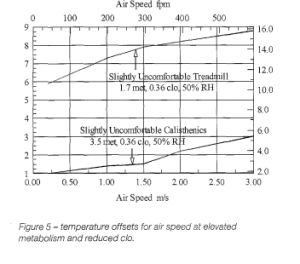
The future of energy costs are looking expensive, with the massive disruptions caused by the demise of coal and the increase in coal pricing, retirement of coal fired power assets within ten years, along with the significant electrical infrastructure changes needed to switch the power grid over to a renewable base.
If you combine this with climate change, and the measurable increases in global, and, more particularly, Australian air temperatures, then the future looks expensive, and hot.
Of course, there are numerous ways to ameliorate the impact of rising power costs and increasing heat loads on our buildings.
Certainly, the most obvious one is to improve the design of buildings, so they are more suited to a particular climate and application. This means they will use less power and offer more comfort to the building inhabitants if this process is correctly followed. And to effectively improve or optimise building design so as these changing requirements are met, is usually easier in a new build, than in a retro fit situation. Getting it right at the start makes it a lot easier and often more cost effective.
Sadly, the current default position is to design and build a non-climatic relevant building, with poor efficiency outcomes, then add air conditioning to the building to ensure the inhabitants are comfortable. And of course, there is a massive number of existing properties that aren’t efficient or comfortable with or without air conditioning.
The impact of air conditioning is significant on both the power consumption of a building and on both related carbon emissions from that power consumption along with the refrigerant emissions that escape from the air conditioning units, which have an additional profound impact on overheating the atmosphere. Additionally, there is also the heat ejection that occurs from the use of air conditioning for cooling. In high density concrete-based cities, this heat rejection gets absorbed by the concrete mass of the buildings resulting in an overheated central city environment. Which then requires more air conditioning to keep cool. Hong Kong is a classic example of this phenomenon.
There aren’t many options available to improve inhabitant comfort in a building especially an existing building, without the use of air conditioning for summer, which is expensive to buy, expensive to run and contributes significantly to the carbon footprint of a building and then, eventually, of a country.
The US National Oceanic and Atmospheric Administration (NOAA) advised 2021 was the sixth hottest year ever recorded, with the Global temperature 1.1°C. above the preindustrial average.
Australia, which is the canary in the coal mine in regards to Anthropogenic Global Warming(AGW) impacts, is leading the way here with our average temperature approximately 1.5°C higher since 1910.1
And air conditioning emissions, created by the use of air conditioning, equal 3.94 per cent of worldwide green house emissions, as per the data from a study conducted by the National Renewable Energy Laboratory (NREL) in the United States. And that measurement doesn’t include the heat expelled into the atmosphere by the air conditioning units.
Professor Ollie Jay in his research in 2019 indicates that the percentage, (when including rogue emissions from escaping refrigerants etc) is more like 10% of the world’s total. It’s a not an insignificant number.
So, as we move towards warmer and warmer summers with increasing electricity costs and upcoming carbon emission restraints, how can air flow help?
In the latest research on the value of air flow and cooling and related productivity as well as comfort improvements in heatwave conditions some detailed research has been undertaken by Professor Ollie Jay from the University of Sydney. It makes very interesting reading.2
He explains the principle as follows:
“… Theoretically therefore, in many situations/conditions, blowing air across the skin of a worker with a device such as an electric fan can yield a similar physical, physiological and perceived cooling effect as cooling the air, and likewise moderate heat-related reductions in work performance at a fixed heart rate, but with a much lower electricity requirement/cost and concomitant environmental impact…”
Some of the key learnings from that research are below. It is not only improvements in comfort that occur from the use of fans, but there is also measurable improvements in productivity in commercial environments. While primarily focused on productivity, the benefits of fans are seen across a range of applications and climates, whether the subject is working or not.
- An increase in convective flow using a simple electric fan in conditions corresponding to a typical hot occupational environment in South East Asia (30°C, 70%RH) yielded improvements in cumulative work output, thermal sensation and discomfort at a fixed heart rate of 110 beats min, that were all at least equivalent to those resulting from a ∼7 °C reduction in air temperature.
- Despite the greater work output with fan use at 30 °C, 70%RH, skin temperatures were ∼1.5 °C lower than without fanning and participants were less dehydrated.
- The ambient conditions of 30 °C, 70%RH were chosen to mimic the mean summer indoor conditions in many occupational settings.
- Compared to no fan use in conditions representative of a typical hot occupational environment in Southeast Asia (30 °C, 70%RH), the use of a simple electric fan yielded equivalent improvements in work output (∼11%) at a fixed average heart rate (of 110 beats min) to a ∼7 °C reduction in air temperature.
- In parallel, reductions in skin temperature, thermal sensation, and the rate of dehydration, as well as improvements in thermal comfort with fan use compared to no fan use at 30 °C, 70%RH were all similar to a 23 °C, 70%RH environment.
- Significant energy and carbon related savings using fans.
One of the key outcomes is to notice the reduction in energy use when using fans compared to air conditioning systems and this was highlighted in Professor Jay’s report.
“… Electricity use using fans is approximately 30 times less than using A/C to cool a 90 m3 working space with 6 occupants with a sedentary rate of metabolic heat production with no additional heat from machinery and equipment!” (Jay et al ,2021)
It is also important to consider the impact of reducing peak electricity load by using fans instead of, or in conjunction with the use of AC. This can help major users of electricity as they get charged by their peak consumption loads. If they can reduce that peak demand, it can save them very large amounts of money in peak electricity charges.
Professor Jay also highlights in his study, how fanning within spaces that are still air-conditioned also has the potential to drastically reduce net HVAC energy demands. He says ..’ The greater convective and evaporative heat loss for a given air temperature (< 35 °C) with more air movement means that the same net cooling effect can be achieved with less air cooling.
His conclusion, summarised below, highlights the value of using fans in heatwave conditions to be improved comfort and productivity.
“… In conclusion, compared to no fan use in conditions representative of a typical hot occupational environment in South East Asia (30 °C, 70%RH), the use of a simple electric fan yielded equivalent improvements in work output ( ∼11%) at a fixed average heart rate (of 110 beats min−1 ) to a ∼7 °C reduction in air temperature. In parallel, reductions in skin temperature, thermal sensation, and the rate of dehydration, as well as improvements in thermal comfort with fan use compared to no fan use at 30 °C, 70%RH were all similar to a 23 °C, 70% RH environment.” 2
So we now have empirical evidence that fans offer significant cooling, comfort and productivity benefits so there is certainly great value in the use of fans in the Australian climate for cooling.
In a more recent report on the use of fans in a broad range of climatic conditions, published in the esteemed journal Lancet Planet Health; 2021 (Electric Fan Use For Cooling During Hot Weather: A Biophysical Modelling Study -Jay et al) Professor Jay et al spoke on the efficacy of fans in optimising comfort, especially cooling, across a broad range of climatic conditions.
He says in his research report:
“On the basis of weather data for the period Jan 1, 2007, to Dec 31, 2019, we found that contrary to many public health recommendations, electric fan use could have been universally recommended for young healthy adults (<60 years old) during peak heatwave conditions in all of the populous cities in Bangladesh, China, Japan, Philippines, Indonesia, Canada, eastern regions of the USA, all of South America and Oceania, and most of Europe (excluding some Mediterranean cities).”
Professors Jay’s work went on further to identify the range of climate and percentages of days where fans would be beneficial in improving comfort and it makes illuminating reading.

Further to the above table, Professor Jay et al’s study also identified the night time value of cooling using fans across a broad range of climates.
If you see the table below, the value for Asia and Australia is very clear.

When cooling a building without air conditioning, Airius has worldwide expertise and through hundreds of examples can quantity that the reduction of capital cost by supplying fans instead of air conditioning a space is around 90%. For example, ducted air conditioning in a 9-metre-high sports hall is around $400.00 a sq metre with around $10.00 / sq. metre annual running and maintenance costs. The cost to provide air movement in that same sized hall using Airius fans, is around $30.00 per sq metre. If you also remember the energy savings achievable when using fans, as per Professor Jay’s analysis, of 90% savings, that’s a large amount of money that can be saved. And of course, as the Airius fans are very efficient, and use very, very low amounts of energy to move large volumes of air, the power consumption in that hall using those fans would be around 2.5 watts per sq metre! At 30 cents a KWH that equates to a running cost of .075 cents per hour!
Back in 2007 Professor Richard Aynsley, a member of ASHRAE and a highly regarded mechanical Engineering specialist, wrote a very informative paper on the value of air flow for cooling for the AIRAH journal here in Australia.
His paper offers supporting documentation to Professor Jay’s studies. Albeit undertaken many years earlier. Physics, it seems, doesn’t change over time.
In his study he highlighted the value of air movement for cooling by using a temperature offset calculation. As can be seen in his chart below, even when working hard with heavier clothing on, a reduction of 9k degrees in thermal sensation can be achieved via the use of air flow at around 2.5 m/s. At air flow levels typical of that found in air conditioning system of around 0.75-1 metres per second a perceived reduction of around 3°C can be felt via the use of air movement. All this ties in well with Professor Jay’s latest research.
Professor Ainsley’s studies also indicate the value of around 2.5 – 5.0°C cooling affect using fans in air-conditioned environments too, offering significant energy savings when using fans in air conditioned environments. Set points can be increased, with a similar result in comfort as using an air conditioning system, but in significant energy and carbon emission savings.

Now that Australia has signed up to the Paris agreement, carbon reductions will become a larger part of doing business, prerequisites in many cases, as is now happening in Europe, with companies being made to reduce carbon emissions and in many cases being rewarded or encouraged to do so through a range of incentives and financially supportive programmes. The world is changing and using fans for cooling, can be a big part of that change.
The use of fans for cooling has been around for thousands of years. Think Egyptians and the fanning guy with the palm fronds.
Airius fans, designed and manufactured in our own plant in the USA, offer a unique patented methodology to move air -vertically and horizontally, as required.
With no exposed blades they have proven extremely successful in warehouses, sports halls, supermarkets, gymnasiums, breweries, indoor pools, theatres, museums, classrooms, bus shelters, parking bays, cricket centres etc around Australia and Southeast Asia. The list of applications is unlimited.
If you want to find out more about a how Airius fans can reduce your energy bills and carbon emissions, improve worker productivity in summer and improve comfort at a very low capital and running cost, and provide your facility with an unobtrusive yet effective outcome, contact us or give me a shout.
Mr John Brodie
Director – Airius Oceania Pty Ltd
E: [email protected]
M: 0401 848 888
REFERENCES
1 https://www.climatechange.environment.nsw.gov.au/australian-climate-change-observations
2 Fanning As an Alternative To Air Conditioning – A Sustainable Solution For Reducing Indoor Occupational Heat Stress (Jay et al, 2019)





